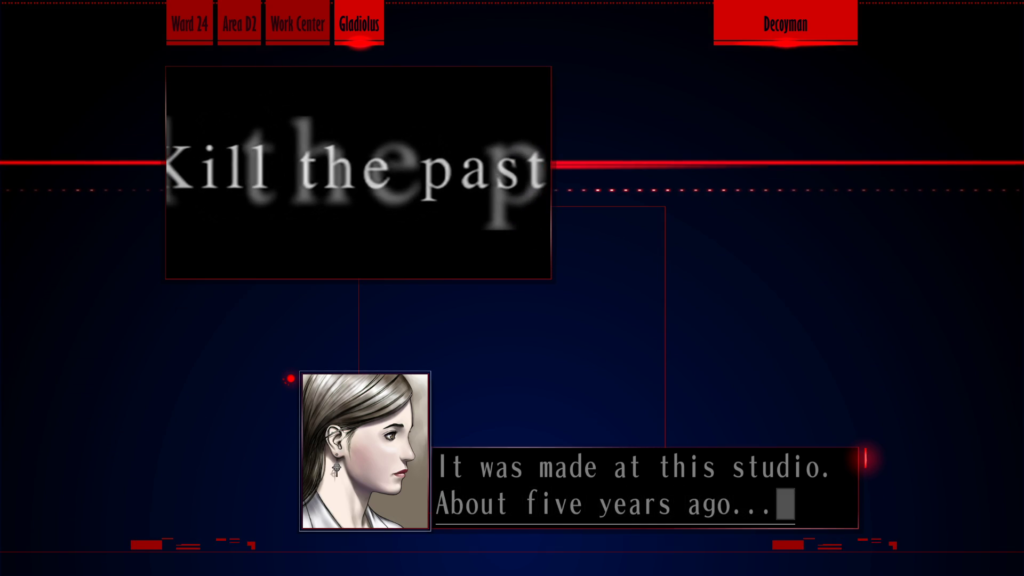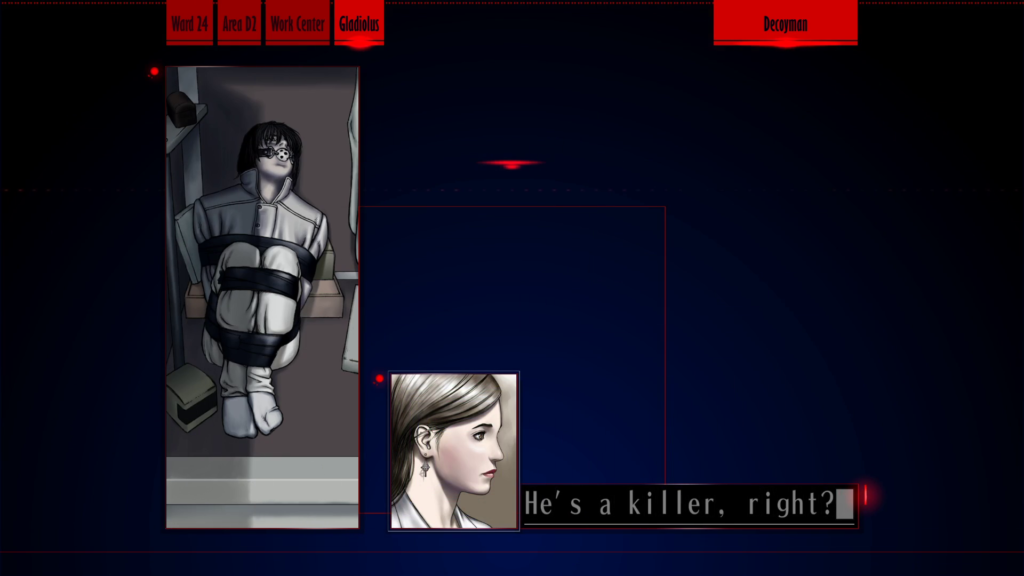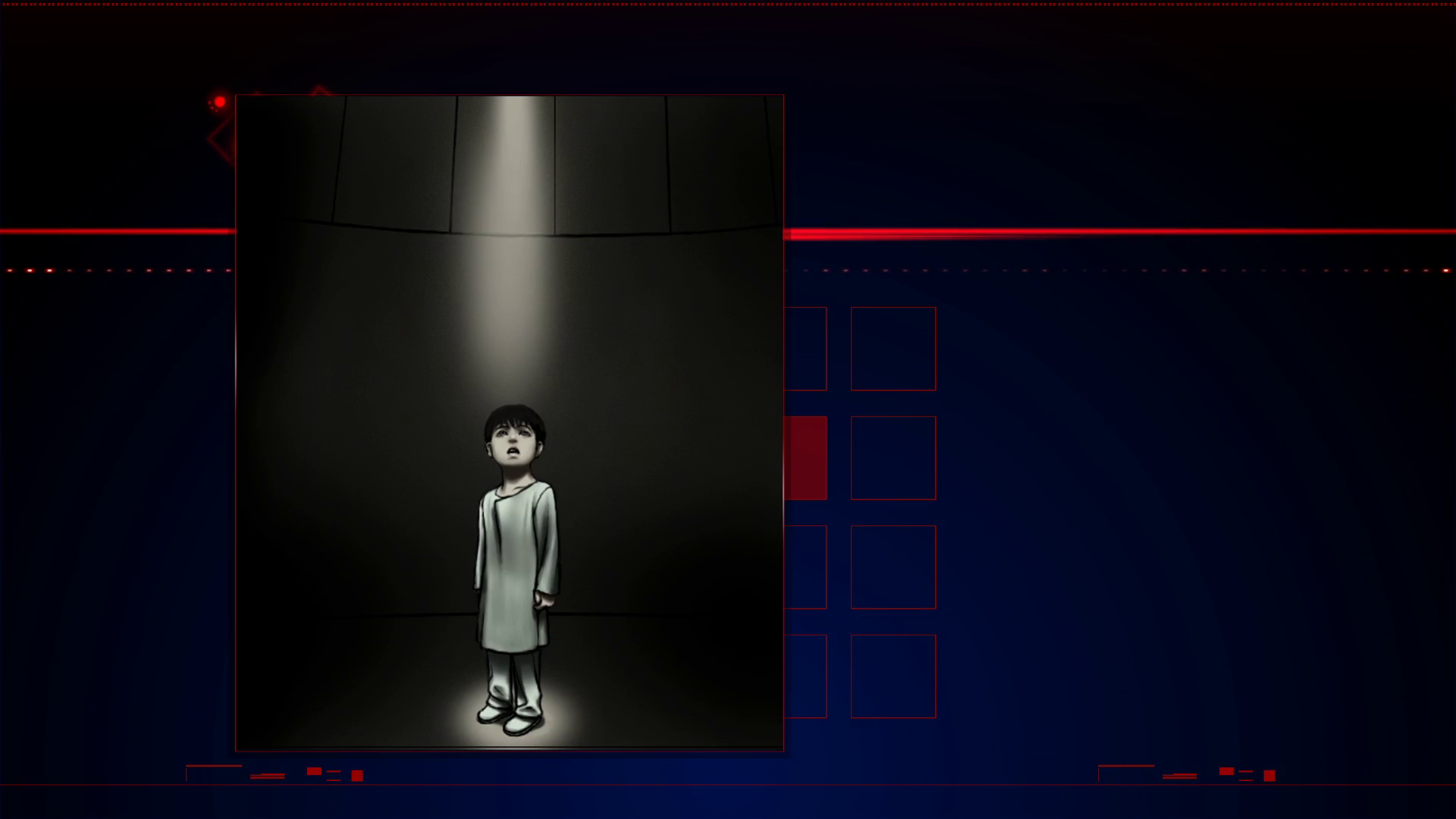The seeds of Kamui being something other than the devil of “inhuman darkness” Nakategawa promises is planted as early as Kusabi and Sumio’s interview with Dr. Tachibana at the IMM Hospital. The purported Uehara Kamui (Fujiwara), says Tachibana, “didn’t have the capacity to take care of himself normally. He has extremely debilitating mental disorders. He does not currently possess the capacity to kill or hurt anyone.” Genre convention primes the audience to dismiss Tachibana’s explanation as Kusabi does. But once Kamui is sitting unresponsive in the 24 Wards Precinct, Morikawa chides Sumio, and in turn the player, for assuming such symptoms could be faked: “He isn’t some kind of ghost, you know. He’s just a man.” This line is, of course, also ironic in consideration of the fourth Kamui.

A key humanizing detail is that Fujiwara used to be an artist. Having attended art school, he and Shimohira Ayame created digital media popular among the ’90s youth culture. The video that the player finds on a computer in Gladiolus features the phrase “Kill the past”—the first time the titular words appear. Ayame says Fujiwara “designed it” and she “put it together” five years before, in 1994. While Kamui Net’s attribution of “Kill the past” to Format Kamui in “KamuiDrome” is questionable, this scene confirms that, at the very least, “Kill the past” is a phrase from Fujiwara Kamui. It is also the only quote that can be confidently attributed to this otherwise silenced, dehumanized man.
Nakategawa mentions that Fujiwara and his counselor, Sonoda Yuriko, had been “involved physically.” Kusabi is less polite: “So they were fucking?” At the time of her death, Sonoda, Nakategawa reports, had Kamui’s semen inside her. Given that Fujiwara is in a vegetative state, “mentally impotent,” Sonoda must have raped him. Given that Akira and Sumio find Fujiwara restrained in bondage gear at Gladiolus and that Shimohira is pregnant with his child, she raped him as well.

Fujiwara is not sexually impotent: Akira later meets the three children Fujiwara had with Sonoda, Yuka Kawai, and Kei Nanami prior to 1995, whose father will never see them again. Grasping what is happening, Fujiwara appears saddened. But dehumanizing and arrogant, Nakategawa dismisses Morikawa as a “romanticist” for perceiving emotion in Fujiwara’s face, “a plastic mask.” Not a serial killer, Fujiwara Kamui is a victim.
Fujiwara is not only a victim of sexual abuse, however, but of the state. He is a Shelter Kid. The close of “Decoyman” includes the first oblique reference to the Shelter Kids Policy. While not the Triangle Towers, another iteration of shelters is on public display as housing units, foreshadowing the 25th Ward. This is the public “truth” concealing the unbearable “facts” of the actual Shelter Kids Policy. As Nakategawa, Morikawa, and Chizuru discuss the shelters, the player is shown Fujiwara as a toddler, alone in the vast darkness, staring up at a ray of light whose origin lies outside the frame.

Nakategawa claims Fujiwara, and in turn Kamui overall, though he exists in the night of the bright moon, shuns light: “The reason Kamui seeks out the darkness and likes being locked up lies in his upbringing. […] As he got a bit older, Kamui’s ‘hometown’ became the shelters. A sullen, dark world where the sunlight can’t reach…” According to Nakategawa, Kamui, possessed by an “evil darkness,” likes being in prison.